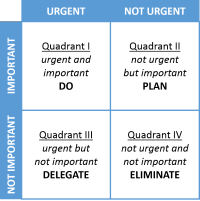
Knoxville Technology Council webinar sheds light on work/life balance
 By Kailyn Lamb, Marketing Content Writer and Editor, PYA
By Kailyn Lamb, Marketing Content Writer and Editor, PYA
The Knoxville Technology Council and Women in Technology Tennessee wrapped up their series on “Women in Tech Leadership” earlier this week with a webinar focused on work/life balance.
You can find the articles on the prior two events here and here.
Sarah Jo Gregory, Wellness Manager at Clayton Homes, was the speaker for the interactive webinar. Gregory has been working with Clayton since 2010 but has led the Wellness team since 2018. Before jumping into the webinar, she shared some of her personal experience with wanting a better work/life balance.
“I got started in this profession because I had a passion for exercise and really physical activity in general, what that could do for you,” she said.
Gregory used interactive elements in Zoom to ask people how they were feeling, how important work/life balance is, and finally, if they felt they had a good work/life balance. She reminded people that it’s important to check in with yourself to see if you are losing balance.
At its peak, the webinar had more than 90 participants. While most of them agreed that work/life balance was important, there was a wider range of answers on whether people actually achieved that balance.
According to Gregory’s presentation, around 66 percent of full-time employees in the U.S. believe they do not have work/life balance. When looking for a job, 72 percent take work/life balance into consideration. And finally, 57 percent of people say poor work/life balance is a deal breaker for them.
Gregory then moved into the definition and history of work/life balance, saying the concept started in the early 1900s with the Fair Labor Standards Act. The term work/life balance was coined in the 1980s when more women were joining the workforce and eventually began the Women’s Liberation Movement.
“The Women’s Liberation Movement actually used that term to describe the challenges women faced juggling family and life,” she said. “Then in the 1990s, that term really did expand to include more than just women, it included men as well, all genders, and it also included more than families, because life outside of work was more than just juggling your family.”
Gregory added the COVID-19 pandemic further challenged work/life balance and how people saw it. She said that while the literal definition of the term talks about dividing time between life and work, the actual meaning is more about feeling energized and fulfilled with both work and life. It’s about investing time in yourself as well as your job.
This is where the word balance can begin to lead people astray, Gregory said. No one has perfect balance between work and life.
“It implies that there are just two categories, work and life, when we know it’s so much more complex than that,” she said. “For example, work is more than the work we do in our relationships at work. It’s our growth and development at work. It’s our fulfillment network.”
Gregory added that work/life balance means something different to everyone and that it’s important to find solutions that work in your life.
The next section of the webinar focused on the impacts of feeling unbalanced, both in physical and mental health, before Gregory touched on some ways people can create solutions for balance.
“What it comes down to is being intentional with our time. A lot of this comes down to that,” she said. “It’s also an ongoing and fluid process.”

Gregory’s first suggestion is to pause and reflect, and to ask yourself questions about what your priorities are right now. She also said people should do this frequently. After you’ve done that, Gregory said people need to figure out what changes they can make to help the situation. Step three is to take those actions.
She recommended using the Eisenhower Decision Matrix (created by Dwight D. Eisenhower, 34th President of the U.S.). The matrix is four boxes. The top two are considered important, while the bottom two are not. The left two are urgent, while the right two are not. Following from left to right, you decide what to do immediately and then schedule a time for less urgent things. In the bottom rows, you decide what to delegate immediately or what does not need to be done. This method helps protect your time, Gregory said. Creating boundaries for your time is another solution.
“Balance is ultimately created through your choice,” Gregory said. “So, make the time now for what’s important to you.”
Like what you've read?
Forward to a friend!

